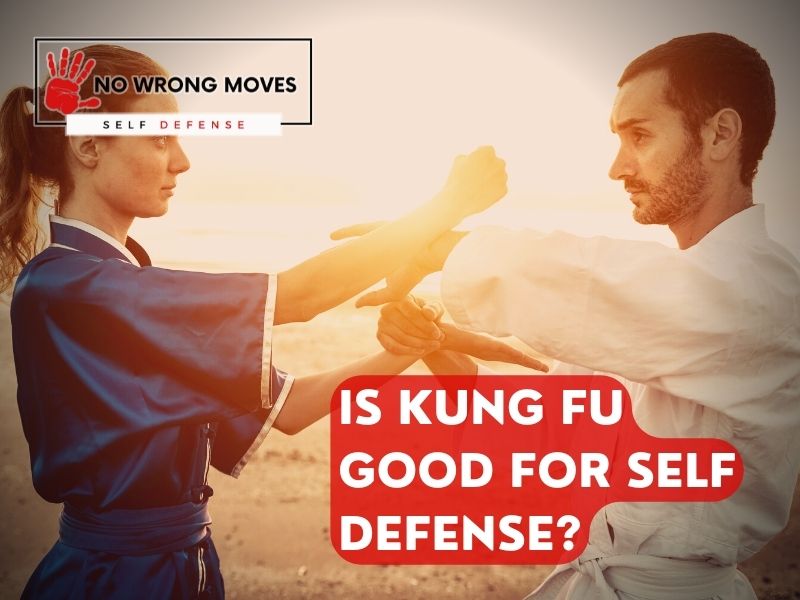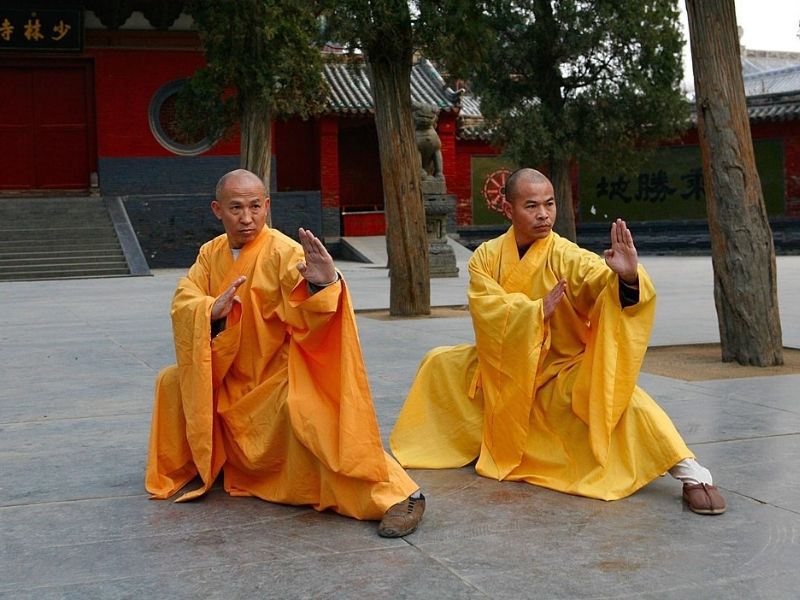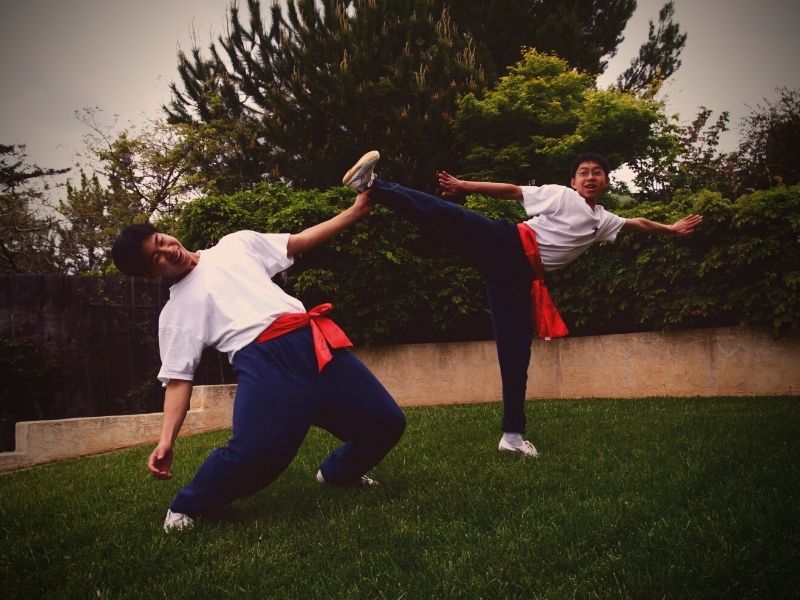
Welcome, reader. Today we delve into the intriguing world of Kung Fu and its effectiveness in self-defense situations. Kung Fu is a term that is commonly used to describe a wide range of martial arts styles that developed in China, each with its own unique techniques and history.
In this article, we will explore the history of Kung Fu, its effectiveness in self-defense and street fights, and why one might choose to learn Kung Fu over another discipline. So, sit back and relax as we embark on this fascinating journey.
The History of Kung Fu

Kung Fu is a martial art with a massive, rich history. It even has ties to serving the hunting and defense needs of early societies.
The sport has come a long way since its origins and can be traced back to the Zhou dynasty, which dates as far back as 1111 BC. Kung Fu was first practiced as exercise by Daoists in the 5th century BC.
What makes Kung Fu unique is its prescribed stances and actions, which are based on a keen understanding of human skeletal and muscular anatomy and physiology.
This ancient knowledge enables practitioners to employ great muscular coordination and achieve a high degree of accuracy and power in their strikes. The martial art primarily utilizes kicks, blocks, and both open and closed hand strikes to inflict damage on an opponent.
Buddhism, however, played a significant role in the development of Kung Fu as well. Buddhism was introduced to China from India around the year 58-76 A.D. and gradually grew in popularity as monks traveled back and forth between the two countries.
As a result, Buddhism became an integral part of Chinese culture and played a significant role in the development of Kung Fu.
There are many different styles of Kung Fu, each with its unique characteristics. However, the Chinese arts have a less clear lineage than other martial arts systems.
Kung Fu is both a form of exercise with a spiritual dimension stemming from concentration and self-discipline and a primarily unarmed mode of personal combat often equated with karate or tae kwon do.
In recent times, the sport has become increasingly popular, and a new genre of action films centered on Kung Fu techniques and philosophies emerged in the latter half of the 20th century.
Overall, Kung Fu is a fascinating martial art with a rich history that continues to evolve and influence martial arts around the world.
How Effective Is Kung Fu For Self Defense?

There is no doubt that Kung Fu is a very effective form of self-defense. It is a martial art that has been practiced for centuries and has been proven to be successful in defending oneself against attackers.
Kung Fu utilizes a combination of strikes, kicks, and blocks that can be used to disable an opponent quickly. In addition, the discipline involved in learning Kung Fu can help you stay calm and focused during a confrontation.
This can be very important, especially if the attacker is larger or stronger than you are.
While there are no guarantees when it comes to defending oneself, Kung Fu is one of the best options available. It can give you the advantage you need to protect yourself and your loved ones.
How Effective Is Kung Fu In A Street Fight?

Kung fu is a form of martial arts that has its origins in China. The term kung fu can refer to any number of Chinese martial arts styles, each with its own distinct techniques and history.
While kung fu is often considered a traditional and ceremonial art form, it can also be an effective fighting style in a street fight. Kung fu practitioners make use of kicks, punches, and throws to disable an opponent.
In addition, kung fu training often emphasizes the use of pressure points, which can be used to inflict pain or cause paralysis. As a result, a skilled kung fu fighter can be a formidable opponent in a street fight.
While there is no guaranteed way to win any fight, kung fu can give you an advantage in a street fight.
Why Choose To Learn Kung Fu Over Another Discipline?
As someone who has practiced martial arts for years, I can attest to the benefits of choosing Kung Fu as a discipline. Here are some reasons why:
Kung Fu is a Well-Rounded Martial Art
One of the main advantages of Kung Fu is its completeness. Unlike some other martial arts, which may focus more on striking or grappling, Kung Fu incorporates both, as well as joint locks, throws, and pressure point strikes.
This makes it a versatile style that can be effective in a wide variety of combat situations.
Kung Fu Has a Strong Spiritual Component
Another unique aspect of Kung Fu is its strong connection to Chinese philosophy and spirituality. Practitioners of Kung Fu often incorporate meditation, breathing exercises, and other mental training into their practice.
This can help students develop greater discipline, focus, and self-confidence, which can be applied both in and out of the martial arts context.
Kung Fu is Adaptable to Different Situations
Kung Fu can be used for both self-defense and competition. The style includes both forms (choreographed movements) and sparring, which can help students learn to apply techniques in real-time situations.
Additionally, because Kung Fu is such a well-rounded martial art, practitioners can adapt their skills to fit different scenarios and opponents.
Kung Fu Provides a Sense of Community
Finally, many Kung Fu schools emphasize a sense of community and camaraderie among students. Traditional training methods often involve working together with partners or in groups, which can build strong bonds among classmates.
This sense of brotherhood/sisterhood can help motivate students and create a supportive environment for learning and personal growth.
In conclusion, while there are many martial arts to choose from, Kung Fu offers a unique combination of physical and mental training that can be highly beneficial for students.
Whether you are interested in self-defense, competition, or personal development, Kung Fu is worth considering.
FAQs To Consider When Choosing A Martial Arts Discipline For Self-Defense
What Are the Key Factors to Consider when Choosing a Martial Arts Discipline for Self-Defense?
When it comes to choosing a martial art for self-defense, there are a number of key factors to consider.
One of the most important is the type of strikes that are used. For example, arts such as boxing and kickboxing focus on punches and kicks, while muay thai also includes elbows and knees.
Another key factor is the ability to grapple, as this can be very useful in close-quarters combat.
Arts such as Brazilian Jiu Jitsu and Judo place a strong emphasis on grappling, while others such as Karate focus more on strikes. Another consideration is the size and strength of the practitioner, as some arts are better suited to larger or smaller individuals.
What Are the Benefits of Training in A Martial Art for Self-Defense?
Training in a martial art can provide many benefits, both mental and physical. For starters, it can be a great workout.
Martial arts require reliance on both strength and stamina, providing a well-rounded workout for the whole body. In addition, martial arts can help to relieve stress.
The discipline required to master techniques can be very calming, and the focus on breath control can help to ease anxiety.
From a practical perspective, martial arts training can also provide a legal form of self-defense. In many jurisdictions, the use of force is only legal if it is necessary to prevent imminent harm.
However, if one has received training in a martial art and can demonstrate that the force used was reasonable and necessary under the circumstances, then it is more likely to be viewed as self-defense.
Finally, martial arts training can help to promote safety. Not only does it provide skills that can be used in self-defense, but it also helps to develop situational awareness and good judgment. As a result, martial arts training can offer many benefits, both physical and mental.
[author-box-jpx-fitness]
